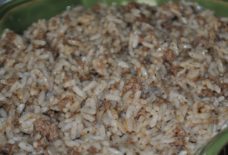Sounds of occupation shape political art by wounded Palestinian
Amira Hass
Haaretz
The Israel Defense Forces soldier who wounded Rehab Nazzal in Bethlehem on Friday, December 11, 2015, by shooting her in the shin, didn’t know who she is. He didn’t know her name; that she was born in Qabatiyah, near Jenin; that she is 55, and also a Canadian citizen; that she teaches art at a college in Bethlehem; that one of her exhibitions angered the Israeli ambassador in Canada; or that she’s writing an interdisciplinary doctoral thesis that’s impossible to summarize in a sentence, but focuses among other things on contemporary weaponry, including drones, and their targeting of human senses.
As part of her research, Nazzal has been watching the weekly demonstrations on Al-Khalil Street in Bethlehem, which is blocked by the forboding separation wall and guard tower, since early October. She films dispersal of the demonstrations, accompanies the wounded to the hospital, meets the families of arrested participants, and speaks with residents of the houses hit by tear gas and by the foul-smelling liquid sprayed by a military vehicle known as the “Skunk.”
As always, Nazzal was holding a camera that Friday. She walked in the opposite direction from the demonstrators, who were fleeing southward because the Skunk was approaching, threatening to disperse in all directions its stinking liquid, which Israel developed as a nonlethal weapon. The repulsive odor clings to the body for days, and no amount of washing will remove it from clothing. But for the sake of her research, Nazzal decided to walk north, get as close as possible to the Skunk vehicle and to film it in action.
Source: www.haaretz.com


